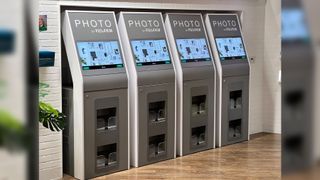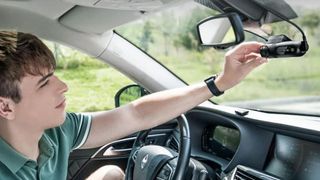
The list in brief ↴
1: Best overall
2: Best for security
3: Best value
4: Best with Alexa
5: Best viewing angles
6: Compact design
7: Best for safety
8: How to choose
9: Common questions
10: How we test
You know what a dash cam is by now. They fit to the windscreen, record video of the road ahead, then save a portion of that footage when a collision is detected, potentially giving you a crucial piece of evidence to clear your name.
You might also be familiar with two-channel dash cams, where the main unit is joined by a second camera facing through the rear screen. But what about a three-channel system? These take the first two – recording forwards and backwards – and join them with a third, this time capturing footage of the interior.
As well as being a clear benefit to taxi and ride-share drivers with unruly passengers, they can appeal to everyone else too. You might have been accused of causing a collision while being distracted by your phone. A dash cam recording into the cabin could help prove you weren’t distracted at that precise moment. The interior view can also capture altercations with pedestrians and other drivers through your side windows.
Many three-channel dash cam systems (also referred to as 3CH dash cams) integrate their interior camera with the one facing forwards, then connect to a rear camera in the conventional way, with a long cable. The interior camera usually employs infrared night vision to help produce detailed (albeit grayscale) footage at night, and in some cases, it can also be used to record a car theft. Some dash cams, like the Nextbase iQ, even let you view a live video stream and sound a siren if an intruder is spotted.
The three-channel systems featured in this guide come from reputable dash cam manufacturers, like Viofo and Nextbase, and cover a range of prices. Plus points include those that record at a high resolution and frame rate through a set of three wide lenses, while negatives include a lack of essentials like GPS and the ability to record in Full HD or above
We have also included a Garmin dash cam that isn’t sold as part of a two- or three-camera system, but can be connected wirelessly to up to three others. This creates a four-camera system that is synchronized so that all four record at precisely the same time. This is the most expensive route to take, but could be the best option for drivers who want the highest possible resolution, the quickest frame rate, and the widest viewing angles. We can see it appealing to drivers of large vehicles like trucks and RVs.
In this article, we round up the best three-channel dash cams on sale today, explain what each has to offer and give you the details you need to choose between them.
The quick list
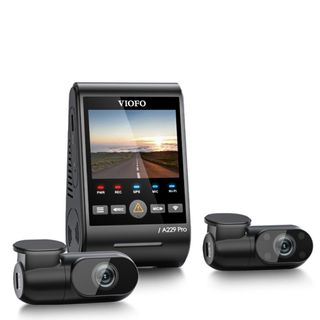
Best overall
4K video and the latest Sony Starvis sensor – plus a screen, HDR and a compact design – make Viofo’s latest flagship our favorite three-channel dash cam.

Best for security
It’s expensive, but the latest dash cam from Nextbase is a powerhouse, with 4G for smartphone alerts, 4K video and an OBD cable for always-on.
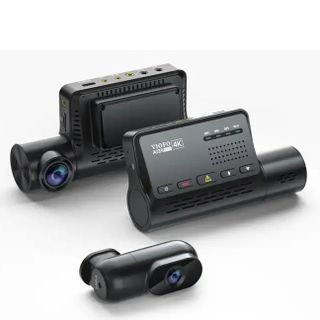
Best value
Representing great value for money, this dash cam has 1440p video recording, GPS, impressive night vision, USB-C connectivity, and a remarkably compact design.
Read more
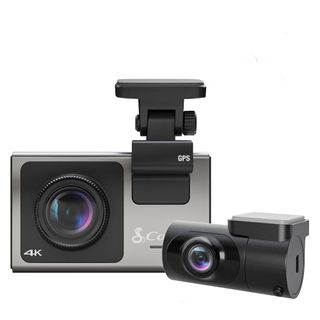
Best with Alexa
This dash cam has a premium design, 4K video and Alexa voice control built in, bringing the ever-helpful Amazon butler to your car.
Read more

Best for viewing angles
Up to four of these Garmin dash cams can be wirelessly connected, creating synchronized, 360-degree footage with HDR. There’s GPS and decent voice control, too.
Read more
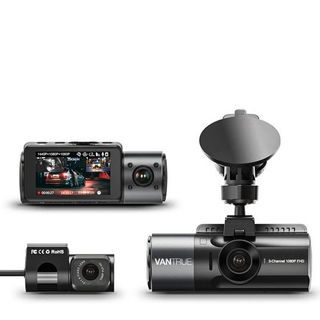
Best compact design
It won’t win a beauty pageant, but this dash cam is nice and compact. It also packs 4K, a display and an integrated interior camera.
Read more
Load more products ↴
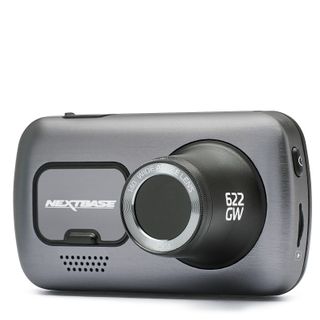
Best for safety
Available with optional interior and rear-facing cameras, the 622GW automatically calls the emergency services and shares your location when a major crash is detected.
Read more

Alistair is a technology and automotive journalist who has reviewed dozens of dash cams over the years. Whether they are $20 or $400, he has tried and tested dash cams from companies like Garmin, Thinkware and Nextbase, as well as lesser-known brands. Every model is fitted to his car and used as if his own before it is reviewed, and then judged if suitable as a recommendations in one of our buying guides. With over a decade of experience, Alistair also writes for Wired, Forbes, T3, and The Independent. A typical week includes reviewing light switches, Lamborghinis, and everything in-between.
The best 3 channel dash cams
Why you can trust Digital Camera World
Best three-channel dash cam overall
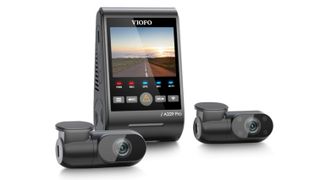
Viofo isn’t as well known as brands like Garmin, but in the last couple of years it has produced some of our favorite dash cams. The A229 Pro is the latest offering and is available as a three-channel system with 4K (2160p) video from the main unit, 2K (1440p) from the rear-facing camera, and Full HD (1080p) from the internal camera. Impressively, all three use the second-generation Sony Starvis image sensors, and all three produce HDR video too.
While the aesthetic is functional rather than pretty, we think the A229 Pro is a smartly designed dash cam that manages to cram a 4K sensor and a 2.4in display into a relatively compact body. We also like how you can use voice control instead of pressing the dash cam’s buttons, and 5GHz WiFi helps speed up transfer times when copying video to your smartphone.
A polarizing lens for the front camera, designed to help reduce dashboard reflections on the windshield, is included in the box, while a parking mode is also available but requires the optional hardwiring kit (sold separately). It lacks the clever 4G connection and OBD power cable of the Nextbase iQ, but at just over £250 we think it represents better value for money.
Learn more about the Viofo A229 Pro 3CH
Best three-channel dash cam for security

4.5 stars
Specifications
Reasons to buy:
The Nextbase iQ is a watershed moment for dash cams, thanks to its 4G connection, how it acts like a security camera when parked, and the manufacturer’s promise of new features via future over-the-air software updates. We love it, but its very high price stops it taking the top spot in this guide. If you want the 4K model with a rear-facing camera, you’re looking at $900.
That’s an enormous amount of money for a dash cam, and don’t forget that some of the 4G-powered features require a monthly subscription too. That said, if you’re okay with the price there’s an awful lot to like here. The iQ’s 4K footage is top-drawer, the hardware feels premium, and we love how the camera receives a constant power supply from its included OBD cable. It makes us wonder why all dash cams don’t do this.
Then there’s the integrated interior camera, which works very well, and how the iQ will buzz your smartphone when it detects a parking prang, or when it thinks someone is loitering by your car. You can then view a live feed from the camera over its 4G connection, and even sound a siren to ward off a potential thief.
See our full Nextbase iQ review
The best three-channel dash cam for value
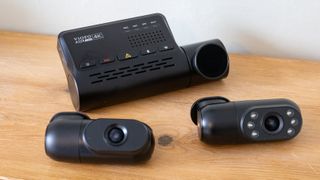
This three-camera setup from UK-based Viofo does without a display, but instead offers a fairly compact main unit with a front-facing camera that records at 2K resolution, also known as 1440p.
It connects with included wires to a pair of near-identical 1080p cameras for the rear and interior views. The latter has IR night vision sensors for capturing higher quality video inside a dimly-lit cabin. GPS is included and we like how the antenna is integrated with the windscreen mount of the main unit. We’re also fans of how the lenses of the interior and rear cameras can be rotated 360 degrees to get the perfect view.
Another plus point for us is the use of Sony’s Starvis imaging sensor, which produces high-quality nighttime recordings. The Viofo loses a couple of points for the front camera lens being only 140 degrees (some rivals are up to 180 degrees) and the lack of a display will be an annoyance to some drivers.
See our full Viofo A139 3CH review
Best three-channel dash cam with Alexa
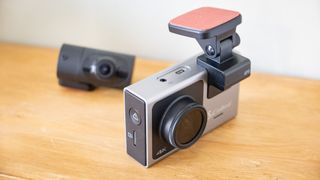
We were very impressed with the quality of video produced by this dash cam from Cobra. The 4K footage shot by the front camera is among the best we have ever seen from a dash cam, while the optional second and third channels record at a perfectly respectable 1080p. Not only is the resolution high, but exposure levels are good, white balance is well controlled and there’s a great amount of detail.
We’re also big fans of how the GPS antenna is cleverly integrated with the dash cam’s magnetic windscreen mount, and there’s Alexa too for those who want it. We must warn readers that this dash cam is fairly large; not as bulky as the Nextbase iQ, but much bigger than anything from Garmin. Those with smaller vehicles and shallow windscreens might want to look elsewhere, but otherwise this is a great (albeit rather expensive) bit of kit.
See our full Cobra SC 400D review
Best three-channel dash cam for viewing angles
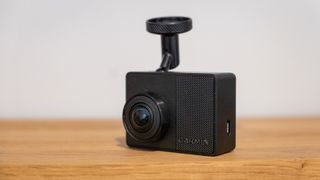
We’ve been a big fan of Garmin dash cams for years now, and firmly believe the 67W is one of the very best. From the compact design and excellent magnetic windscreen mount, to the wide, 180-degree lens, HDR video and voice controls, this dash cam is one for every buyer to consider. And, while it doesn’t have an integrated interior camera, and nor does Garmin sell a dedicated rear-view camera, the company has a system where up to four of its dash cams can be wirelessly connected together.
The result is a synchronized video feed from two, three or even four views all around your vehicle. This makes a Garmin multicam system expensive, and means you’ll have to provide power for each camera, instead of plugging them all into the main forward-facing unit. But the 180-degree lens means you’ll get a truly comprehensive view ahead, behind and inside the vehicle. Throw in GPS, optional online storage and a suite of driver warnings, and this dash cam is hard to beat.
See our full Garmin 67W review.
The best three-channel dashcam with a compact design

Don’t get too drawn into this dash cam’s 4K recording capability. Because, while the front-facing camera can handle 4K on its own, when used with either the rear or interior camera, or with all three running together, that resolution is no longer available.
As a three-camera system you’re looking at a still-respectable resolution of 1440p for the front view and 1080p for the rear and interior views. Like most other systems, this dash cam has a parking mode that starts recording the moment a collision is detected (but only when the dash cam is hardwired to the car’s fuse box for a constant source of power, something you might need a professional to do). Go down the DIY route, however, and you’ll be faced by a whole bunch of cables powering each of the cameras; it can look cluttered, especially on cars with smaller windscreens.
There’s no GPS, so videos don’t have speed and location data, but we think this kit still represents decent value for money, especially considering its compact size and inclusion of a small display.
See our full Vantrue N4 review.
The best three-channel dash cam for safety
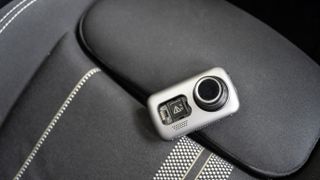
This dash cam begins life as a single-channel system, but can be upgraded thanks to its modular design. Nextbase sells an interior camera that plugs directly into the 622GW itself and records at 1080p through a 140-degree lens. Then you can hook up the company’s rear view camera, which sticks to the rear screen and attaches to the 622GW with a long cable; this also shoots at 180p through a 140-degree lens.
Do all this and you’ll have a three-camera system that costs less than the 4K, two-camera version of the Nextbase iQ. For your money you also get Alexa control with the 622GW, plus digital image stabilization, support for what3words, a parking mode, and a system that automatically calls the emergency services and shares your location if a significant crash is detected.
We’ve always lik3ed Nextbase dash cams, and for us the 622GW makes a fantastic two- or three-camera setup. The iQ means this is no longer the flagship of the range, but the lower price combined with a great feature set and 4K video mean the 622GW is still a dash cam we thoroughly recommend.
Read our full Nextbase 622GW review
How to choose the best three-channel dash cam
Since this guide is specifically about three-channel systems specifically, your first consideration needs to be whether the dash cam you’re looking at can handle a further two cameras.
With that box ticked, it’s time to look at models that fall into your budget, then access their resolution, frame rate and field-of-view. You want a high resolution (1440p, also known as 2K, works well), but also a quick frame rate (30fps will do, but 60fps is preferable) and a wide lens (140 degrees at a minimum).
We urge readers to consider how they plan to use their dash cam. WIll you be logging in with your smartphone and do you want to set up all of its driver assistance features? Or would you rather take a set-it-and-forget-it approach, only ever checking footage on the microSD card if the worst were to happen and you’re involved in a crash? This will help you decide what you want from a dash cam.
Frequently asked questions
Can all dash cams be made into three-channel systems?
No. Some dash cams are built to only ever work on their own. Others can be connected to a rear-facing camera, while only a small number also work with a third channel. This is usually an interior view, which often comes from a second camera fitted to the main unit. In very rare cases, like with Garmin’s dash cams, two, three or four can be wirelessly connected for synchronized video recording.
How do you install a three-channel dash cam?
The main unit installs just like any other dashcam, plugging into either the 12V socket or the car’s OBD port (as is the case with the Nextbase iQ). Many of these dash cams can also be hardwired to the fuse box instead, which provides a constant supply of power and enables their parking mode.
Interior cameras are usually integrated with the front-facing camera, while the third, rear-facing camera then plugs into the main unit with an included cable. These are often very long and should be tucked behind the interior panels of your car (and often behind the roof lining) to make for a neater and less cluttered finish. Such a setup – where the interior camera is integrated and the rear view plugs into the front camera – is powered by a single 12V socket or hardwiring connection.
How we pick the best
The dash cams featured in this guide were all chosen because they have at least one feature that sets them apart from the crowd. Some have 4K image sensors, while others perform exceptionally well in low-light environments, or are more compact than their rivals. Other dash cams earned a place on this list because they are packed with features like 4G, Alexa and automatic emergency phone calling; some even offer a fourth channel for a comprehensive, 360-degree view around your vehicle.
Ultimately, the best overall was chosen because it struck the best balance between features, design, performance and price.
How we test three-channel dash cams
Like all other types of dash cam, we have fitted all of these three-channel modes to a car and used them for several days before reaching a verdict. They are tested during the day and at night to see how they cope with varying light, and we try to use them in a range of weather conditions too. During our time with each dash cam we assess how easy their installation and setup process is, while also looking at video quality, ease-of-use and the reliability of features like 4G connections and smartphone app notifications.
When it comes to video quality, we care about the details. License plates and road signs must be clearly visible, day and night, for a dash cam to score highly. These are the crucial details that buyers will rely on if they’re ever in a collision.
For three-channel dash cams specifically, we test out how each camera works, and whether the quality of the front-facing camera decreases when a second or third camera is installed. This is sometimes the case, with the front resolution falling from 4K to 2K, for example, due to the processing demands of three cameras all running at once.
You know what a dash cam is by now. They fit to the windscreen, record video of the road ahead, then save a portion of that footage when a collision is detected, potentially giving you a crucial piece of evidence to clear your name.
You might also be familiar with two-channel dash cams, where the main unit is joined by a second camera facing through the rear screen. But what about a three-channel system? These take the first two – recording forwards and backwards – and join them with a third, this time capturing footage of the interior.
As well as being a clear benefit to taxi and ride-share drivers with unruly passengers, they can appeal to everyone else too. You might have been accused of causing a collision while being distracted by your phone. A dash cam recording into the cabin could help prove you weren’t distracted at that precise moment. The interior view can also capture altercations with pedestrians and other drivers through your side windows.
Many three-channel dash cam systems (also referred to as 3CH dash cams) integrate their interior camera with the one facing forwards, then connect to a rear camera in the conventional way, with a long cable. The interior camera usually employs infrared night vision to help produce detailed (albeit grayscale) footage at night, and in some cases, it can also be used to record a car theft. Some dash cams, like the Nextbase iQ, even let you view a live video stream and sound a siren if an intruder is spotted.

